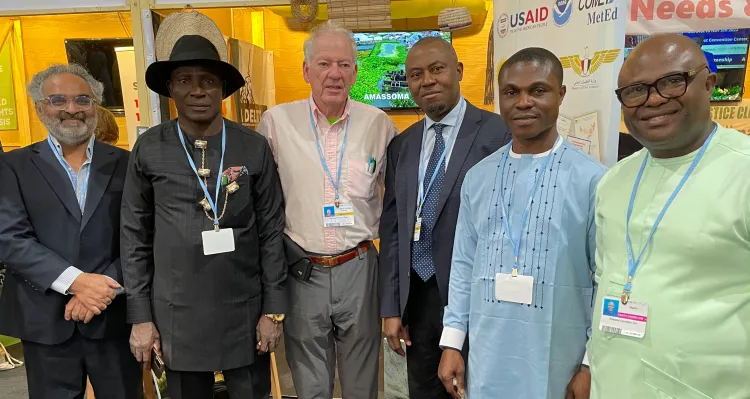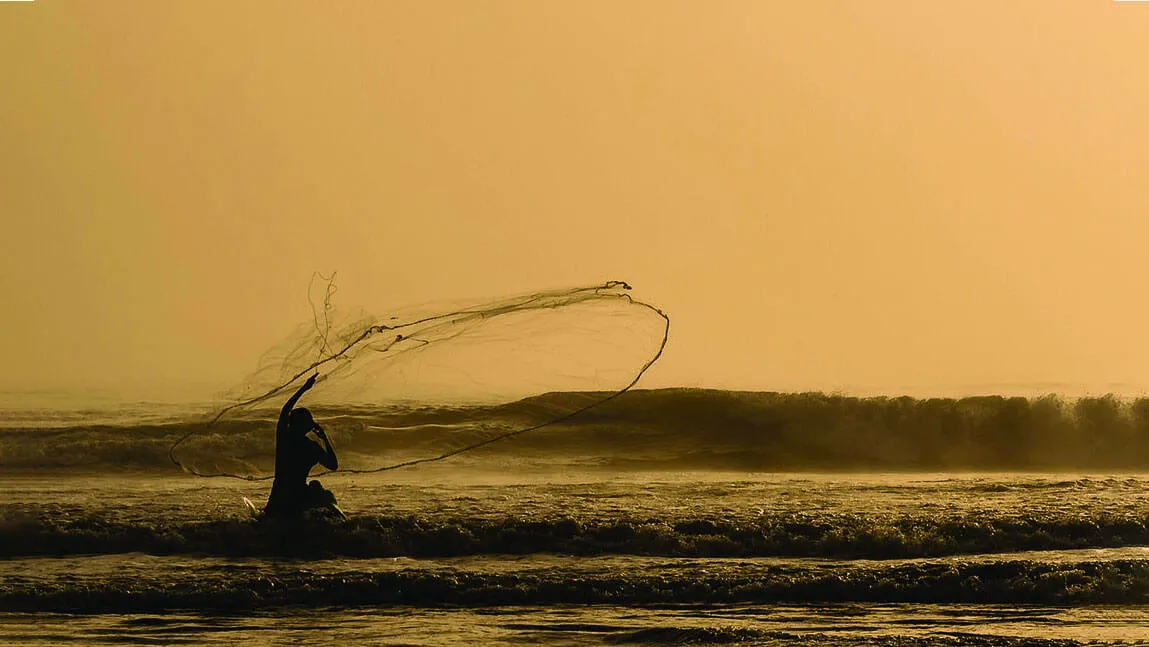Among the heads of state, ministers, negotiators, climate activists and CEOs who gathered in Egypt for the COP27 talks was Dr. Asim Zia, UVM Professor of Public Policy and Computer Science.
COP27, short for the 27th Conference of the Parties to the United Nations Framework Convention on Climate Change, was held November 6-18 in Sharm El-Sheikh, Egypt. The conference aims were to deliver action on reducing greenhouse gas emissions, building resilience, and financing climate action in poorer developing countries.
Zia actually made two trips to Egypt this fall. He joined colleagues in late October for preparatory meetings in Cairo after UN Secretary-General Antonio Guterres announced an initiative called “Early Warnings for All.” Zia was called in as part of a working group to develop a five-year plan for insuring people all over the world are protected by early warning systems of major climate disasters. The focus is shifting, he says, from active monitoring to effective early warning strategies.
“We have complex systems including sophisticated data from satellites, but the information does not always get to people in ways that help them respond effectively,” explained Zia. “And we’ve seen that the people who are most vulnerable to climate disasters are also the people who contributed very little to carbon emissions, the root cause of the problem.”
The resulting statement outlined five calls to action headlined by the phrase “Getting past ‘handshaking’ to ‘life-saving action.’” The work of Zia’s committee contributed to the secretary-general’s opening address when the COP27 talks began. Guterres called for investments of $3.1 billion between 2023-2027 for improved early warning systems, citing it as a moral as well as technological imperative.
“People in Africa, South Asia, South and Central America, and the inhabitants of small island states are 15 times more likely to die from climate disasters,” Guterres said. “These disasters displace three times more people than war. And the situation is getting worse.”
Clean water for all
Zia’s research straddles the hard science of climate change and policymaking. Supported by funding from the National Science Foundation (NSF) and NOAA, he leads a team that develops assessment models that project impacts of climate change induced weather events and access to clean water. His work has taken him to major watersheds throughout the world, from the Lake Champlain basin to large river basins, such as the Indus, Mekong and Amazon.
He says while $3.1 billion in spending might seem like a big investment for improved early warning systems, the payoff is worth it.
“Climate change induced disasters are going be leading to three to $4 trillion worth of damages in just the next 10 years,” Zia said.
A native of Pakistan, he observed the effects of devastating floods in his home country this summer that killed over 1300 people and caused estimated damages of $30 billion. The floods were caused by monsoon rains, the heaviest since 1961, followed by a severe heat wave. One-third of country was underwater and 33 million people were displaced, Zia said.
“The monsoon season typically comes in July and August and storms hit the upper Himalayas. But because of climate change, the monsoonal trough is farther south than normal, bringing more rains over southern Pakistan. People are not ready in the lowlands to receive that much rain.”
A seat at the table
During the COP27 conference Zia and his group made presentations on early warning action systems for large transboundary river basins. He explained that scientists and planners need to account for the increasing frequency of inhabitants in higher elevations building dams which provide local water security, but deprives lowland populations of water.
“For countries like Egypt and Sudan, there are impacts on water quality as well,” Zia noted. “When you build upland dams there is more sediment in the water downstream. That also puts stress on fish populations.”
These are problems Zia has been working on during his career at UVM. In 2018, he helped the university establish the Transboundary Water-in Cooperation Network (TWIN) with Bennington College’s Center for the advancement of Public Action. In five years, the TWIN membership has expanded to seven transboundary river basins, including Indus, Mekong, Jordan, Nile, Congo, Amazon and St. Lawrence basins.
This “network of networks,” as Zia calls it, has grown to include dozens of partner organizations around the world. The common goal for TWIN partners simply states “clean water for all.” Zia represented TWIN in several side sessions at the conference.
He takes special satisfaction in successfully inserting language from the working committee into key sections of the final COP27 agreement (PDF).
“With a document that’s so complex, and with so many contributors and stakeholders, changing even a word or phrase can involve lengthy debate,” said Zia. “My battle, stemming from the earlier working committee, was to insert language that emphasized not just improved forecasting but also the need for immediate action in communicating early warnings effectively. Essentially our 3-page Cairo statement was condensed into two paragraphs 29 and 30.”
For many, the overall success of the conference hinged on establishing mechanisms for wealthier countries like the United States and China, which emit by far the most greenhouse gases, to pay for climate change damages that largely affecting developing nations. Reactions are mixed: COP27 did close with an agreement to provide “loss and damage” funding for vulnerable countries. Others point out the meeting failed to agree on the need to phase down use of fossil fuels which is critical to meeting the 1.5 degree Celsius warming limit above pre-industrial levels.
Zia is an optimist by nature. While COP27 didn’t have ironclad outcomes many hoped for, he understands he can only work on a piece of the climate puzzle. “The Egyptian co-presidency of COP27 successfully highlighted urgent issues of water security, and we’re moving towards not just monitoring, but action. For me that’s encouraging.”

